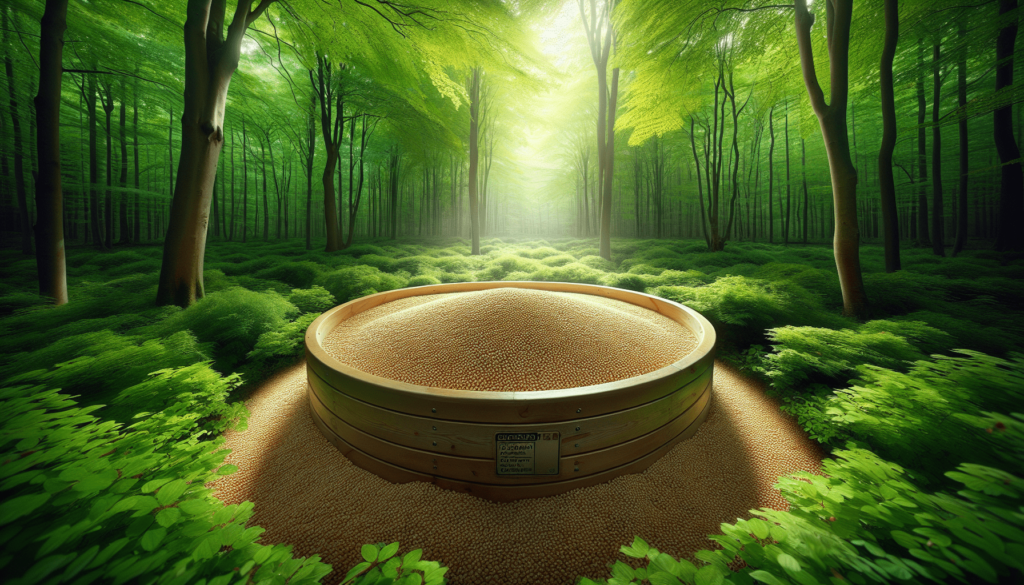
What do you think is the most important factor in keeping deer healthy during feeding?
When it comes to providing food for deer, ensuring hygiene is vital. Maintaining a clean feeding environment helps prevent mold and bacteria growth, which can have detrimental effects on deer health. The thriving wilderness we find ourselves in can be beautiful and sometimes precarious, and understanding how to manage deer feeding with hygiene in mind can ensure these graceful creatures are healthy and strong.

The Importance of Hygiene in Deer Feeding
Have you ever considered how hygiene impacts the health of deer? Just like in other animals, the food you provide for deer can harbor harmful microorganisms if not carefully managed. By keeping feeding areas sanitary, you contribute to the overall well-being of the deer and the ecosystem.
Understanding Mold and Bacteria
Mold and bacteria are ubiquitous in nature, but in concentrated feeding environments, they can proliferate rapidly. Mold spores can contaminate food and flourish in nutrient-rich environments. Bacteria can be particularly troublesome, leading to potential health issues in deer, such as digestive problems and infections.
It’s essential to recognize that not all bacteria are harmful, but certain strains can lead to severe health complications. Understanding which molds and bacteria can affect deer will help you make informed decisions on feeding practices.
Factors Contributing to Mold and Bacteria Growth
Several factors can increase the growth of mold and bacteria in deer feeding areas:
- Moisture: High humidity and wet conditions create an ideal environment for mold growth.
- Temperature: Warmer temperatures often encourage quicker growth of both mold and bacteria.
- Organic Material: Leftover food, debris, and waste provide excellent nutrients for mold and bacteria.
- Poor Ventilation: Areas that lack airflow can retain moisture, further supporting microbial growth.
Being aware of these factors will empower you to take control and mitigate the risks associated with substandard feeding environments.
Best Practices for Deer Feeding Hygiene
When you set out to feed deer, incorporate these best practices to keep their feeding environment clean and healthy. Each of these practices plays a significant role in reducing mold and bacteria while promoting a healthy habitat for deer.
Regular Cleaning of Feeding Areas
One of the most crucial steps in maintaining hygiene is to regularly clean the feeding sites. By removing uneaten food, debris, and droppings, you can limit the amount of organic material that might attract mold and bacteria.
Cleaning Protocol
| Cleaning Step | Frequency |
|---|---|
| Remove uneaten food | Every day |
| Clean feeding troughs | Weekly |
| Clear surrounding debris | Monthly |
| Disinfect areas regularly | Every few weeks |
Set a schedule that works for you, adhering to these frequencies ensures a consistent cleanliness standard.
Choosing the Right Feeding Equipment
The type of feeding equipment you choose can also impact hygiene. It’s advisable to select feeders that are easy to clean and made of non-porous materials. Avoid wooden feeders, as they can absorb moisture and harbor bacteria.
Recommended Materials
- Metal: Galvanized steel or aluminum feeders are durable and easy to clean.
- Plastic: High-density polyethylene (HDPE) is strong and resistant to environmental impacts.
Investing in quality feeding equipment not only benefits the deer but also saves time in maintenance long-term.
Opt for Quality Feed
The feed you provide affects not only the deer’s health but also the cleanliness of the feeding area. Choose quality feed that has low moisture content and is specifically formulated for deer. This reduces the likelihood of mold growing on the food itself.
Types of Feed to Consider
| Type of Feed | Mold Risk |
|---|---|
| Processed Deer Pellets | Low (if stored properly) |
| Whole Grains | Moderate (may attract pests) |
| Corn | High (if moisture present) |
Consider encapsulated feeds designed to withstand environmental challenges, as these have lower chances of spoilage.
Environmental Adjustments
Taking steps to adjust the environment will further help mitigate mold and bacteria growth. Identifying key areas where moisture can accumulate can lead to significant improvements in hygiene.
Site Selection
Choose your deer feeding site wisely. Ensure it’s not in low-lying areas where water can pool, and consider sloping grounds to promote drainage.
Providing Shelter
Offering some shelter over the feeding area, like a roof or tarp, will significantly reduce exposure to moisture. This simple adjustment protects the feed from rain and snow, which often leads to increased mold and bacteria.
Creating a Controlled Feeding Schedule
By controlling when you feed the deer, you can limit the time food sits around, reducing the chance for mold and bacteria to develop.
Feeding Timetable
| Feeding Timing | Benefits |
|---|---|
| Morning | Best for deer activity levels |
| Weekly | Minimized leftovers |
| Limited quantities | Reduces waste |
Establish a routine where you can monitor the feed and clean regularly while adapting to the natural patterns of deer behavior.
Monitoring Deer Health
Regular monitoring can not only ensure that your feeding practices support deer hygiene, but you can also get a read on the overall health of the herd.
Signs of Health Issues
Keep an eye out for symptoms of illness, which may include:
- Lack of appetite
- Unusual behavior
- Weight loss
Being vigilant allows you to act quickly. If you notice any signs, it’s wise to consult a veterinarian with experience in wildlife health.
Recordkeeping
Start a record of your feeding practices, including types of feed used, feeding schedules, and observations about deer health. Over time, this can help you understand trends and adjust your practices for better outcomes.

Understanding the Seasons
Each season presents unique challenges and opportunities in feeding deer. Adapting your strategies based on seasonal changes can help maintain hygiene and health.
Spring and Summer
These warmer months can lead to heightened mold and bacteria growth due to increased humidity. Focus on:
- Providing fresh feed daily.
- Ensuring equipment is clean and dry.
- Monitoring for pest infestations.
Fall and Winter
As temperatures drop, deer activity can rise as they prepare for winter. Focus on:
- Increasing feed amounts to support energy needs.
- Offering wind protection in feeding areas.
- Regularly checking for spoilage since colder temperatures can mask mold growth.
Educational Resources
Consider engaging with educational resources tailored to wildlife management. Books, online courses, and workshops can deepen your understanding of deer feeding practices and hygiene management.
Recommended Resources
- Wildlife Management Textbooks: Offer a comprehensive look at deer behavior and health.
- University Extension Programs: Often provide local insights on deer feeding specifics.
- Online Forums: Connect with other deer enthusiasts to share knowledge and experiences.
Community Engagement
Connecting with others who share your interest in wildlife can enhance your learning experience. Whether through local wildlife groups or online communities, exchanging tips and best practices helps you develop effective feeding strategies.
Community Involvement Opportunities
- Wildlife Conservation Events: Participate to understand local deer populations better.
- Volunteering in Deer Habitat Projects: Engage in habitat conservation initiatives.
Being part of a community can deepen your appreciation for nature and boost your best practices in deer feeding.
The Bigger Picture
Always remember that your role in maintaining hygiene in deer feeding contributes positively to the ecosystem. By fostering a healthy deer population, you indirectly support the planet, wildlife, and biodiversity.
Encouraging Healthy Habitats
Contributing to the creation of healthy habitats can lead to thriving deer populations, which will benefit other species and the surrounding ecosystem. The health of deer can also impact vegetation and the overall balance within your local environment.
Conclusion
Thinking about how you feed deer and maintain hygiene may seem simplistic, but the impacts are profound. Everything from regular cleaning and quality feed choices to monitoring deer health and community involvement plays a pivotal role in sustaining a healthy deer population.
By proactively engaging in clean feeding practices and understanding the nuances of the surrounding environment, you cultivate a sanctuary for deer that fosters their growth and well-being. You become a steward of their health, ensuring that your efforts contribute to a richer and balanced ecosystem.
The efforts you put into maintaining hygiene in deer feeding go far beyond providing food; they resonate through the environment, creating a ripple effect of positivity that touches every aspect of wildlife health and conservation.





